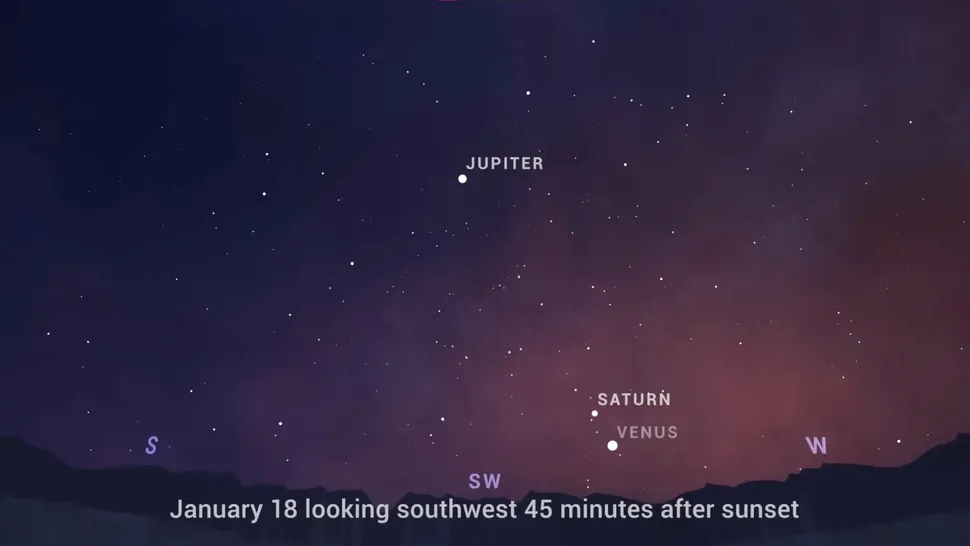[ Skywatchers ] [ Main Menu ]
47092

From: Eve, [DNS_Address]
Subject: Watch Venus and Saturn begin joining up in the night sky this week
URL: https://www.space.com/venus-saturn-join-up-before-conjunction-jan-22-2023
|
https://www.space.com/venus-saturn-join-up-before-conjunction-jan-22-2023 Watch Venus and Saturn begin joining up in the night sky this week By Stefanie Waldek published about 12 hours ago The planets will begin closing in on one another ahead of a conjunction on Sunday (Jan. 22). Image Caption:A NASA/JPL image showing Venus and Saturn moving together in the night sky beginning on Jan. 18. (Image credit: NASA/JPL-Caltech) Venus and Saturn are on a visual crash course, and you can watch the planets make their close approach all this week. The two planets are, of course, more than 800 million miles (nearly 130 million kilometers) apart on average, so there's no chance of them literally colliding. But their orbits will make them seem like they might from the vantage point of skywatchers here on Earth. Starting Wednesday (Jan. 18), the planets will begin their close approach toward one another. About 45 minutes after sunset, look to the northwest sky, close to the horizon, and you'll spot the two planets. Venus will be substantially brighter than Saturn — it's the third brightest celestial body in the sky, after the sun and the moon. The two planets will make their closest approach, also known as an appulse, on Sunday, (Jan. 22). At the same time, Venus and Saturn will also reach conjunction, which is when planets share the same right ascension (an angular distance used to locate celestial bodies in the night sky). On Jan. 22, the planets will become visible from New York City at 5:18 pm EST (2218 GMT), according to skywatching site In-the-Sky.org(opens in new tab) about 14 degrees above the horizon in the southwest sky. (If you need help measuring that distance, it's about one and a half of your fists stacked on top of each other at arm's length.) The pair won't be visible for long, though — they'll sink below the horizon at 6:48 p.m. EST (2348 GMT). But while they're visible on Sunday (Jan. 22), they'll appear to be extraordinarily close together, just a tiny one-third of a degree apart, according to NASA's Jet Propulsion Laboratory(opens in new tab). That means they'll be close enough to see within the field of view of a pair of binoculars, and perhaps even some low-powered telescopes. |
47098
From: sher, [DNS_Address]
Subject: Re: Watch Venus and Saturn begin joining up in the night sky this week
| Thanks Eve! |
Responses:
[47099]
47099
From: Eve, [DNS_Address]
Subject: Re: Watch Venus and Saturn begin joining up in the night sky this week
URL: https://whenthecurveslineup.com/2022/12/27/2023-january-22-venus-saturn-conjunction-morning-mercury/
|
You are welcome sher! Saturn and Venus are real time sky in the constellation of Capricornus and the conjunction will take place on the same day as the New Moon in constellation Capricornus. The Earth will be in constellation Cancer (which was the constellation of a scarab to the ancient Egyptians... the scarab was to them a deity they worshipped). |
Responses:
None
[ Skywatchers ] [ Main Menu ]